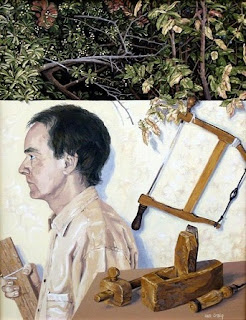Night Clubbing 1.
He’s late. Again. He’s always late. It’s just his little game of one-upmanship. Middle class parents and all that. Assume the higher ground. True enough he has the wheels for this evening’s entertainment, but we both know when it comes to pulling the girls, I’m the one expected to go in first.
I use the time to go over my choice of wardrobe for the evening, Roxy Music playing in the background. I’m so vain I actually make fashion style sketches of my outfits for every time I visit a club. Each sketch is dated and bears the name of the club underneath. This way I’m never seen in any establishment wearing the same combination twice. I check what I’m wearing now against the chart: Light double breasted Paul Smith jacket; two-tone platform shoes; dark brown Oxford bags; broad tie (it is a Sunday after all), yes, the striped one I think. Everything checks out. I’m looking good. If we don’t pull at least we’ll look like Robert Redford and Paul Newman in “The Sting”.
We show our membership cards at the door. We have ALL the membership cards necessary across two counties and some as far afield as Leeds and Liverpool. We check our hair in the Gents. We sip our Dry Martinis and check out the crowd. They’ve noticed us but don’t yet know us. The dance floor is small and tight. The music is bliss. Stax soul and late Motown, with a side dish of Brian Ferry for seasoning. I love to dance. I’m actually good at it. Not many guys in here can say that.
Two girls are stood on the other side of the small dance floor, all summer dresses and blonde. Surely out of our class? He doesn’t think so. He wants to give it a go. I’m dubious. If they turn us down, and I think they will, every other girl in the place will do the same for fear of appearing second choice. Or third. Or fourth. Fourth choice is not an unusual scenario. We’ve gone down the scale a lot lower than that. Many times. No pride in the heat of the night. I also have other reservations about these two. Because even if we do pull them, the evening is only likely to be one of conversation, expensive drinks and Goodnight Vienna. Too classy.
He’s still keen. Okay, I go in. Polite, attentive, charming. Leave no awkward silences. Style is more important than content. And separate them as soon as possible. As it turns out, no worries. This pair are way ahead of us. They’ve already decided who’s going with who before I even reach them. Refreshing. We’ve clearly met our well-matched match.
After a few Marvin Gaye’s, her polka-dot mini dress flirting in all the right places, she asks the usual: “What do you do?” That old line. I never use it. But I’ve known the words “art student” to loosen miners’ daughters’ knicker elastic at a hundred paces. And some of their wives. “You don’t look like an art student”. She’s right. These truly are my schizoid years. Mild mannered art student by day, dance hall dandy by night. She tells me she’s a secretary. Later in the relationship she will tell me her boss chases her around the office. Such fantasies are a turn-on for some boyfriends. It’s all Benny Hill to me.
The four of us have a great evening. We really do. I will even write a dumb song about it when I get home. Come closing time we walk them out to the car park, splitting into couples, hopeful of that goodnight kiss. There’s even a full moon. She kisses great, not always the case on such first meetings as this, and suggests I sit in her car for a while. Hey, no problem. Polka-dot mini-dress inside a mini-cooper is my favourite décor.
My hand settles above her knee. A little too soon? Maybe so. But I don’t necessarily always go through all the bases in numerical order. The tips of my fingers slip just inside the very rim of her knickers. She kisses back harder, settling into her seat, ready to enjoy herself, knees slightly parting. I take my time. Some things are better not rushed. She doesn’t touch me in return. Classy.
All text, pros, photos & artwork, copyright Ian Gordon Craig.









